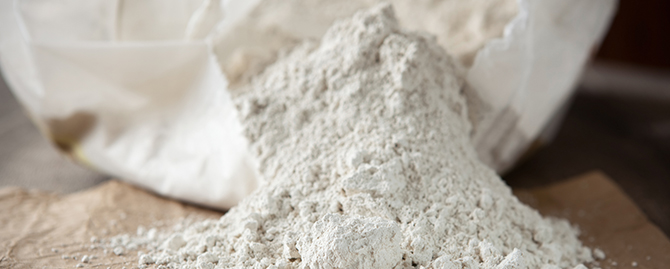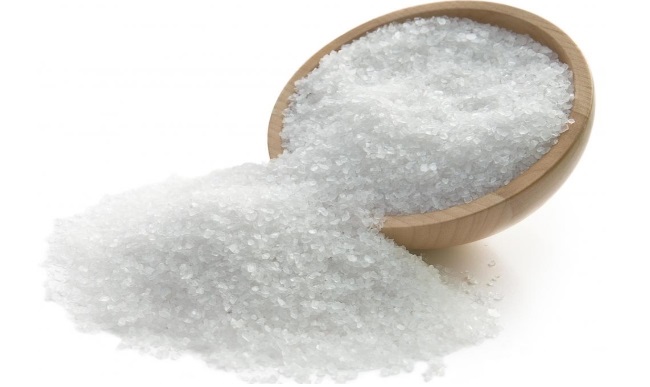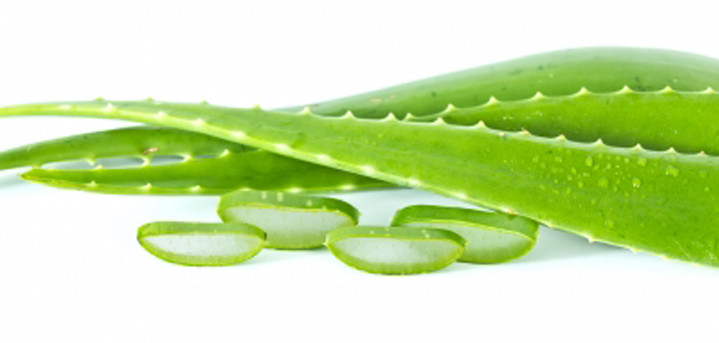Fleas are parasites, and they should be decimated once discovered. They are dangerous and oftentimes fatal to humans. The common fleas that bite humans are cat fleas, otherwise known as Ctenopcephalis Felis, which are known to transmit bacteria that cause plague.
This is not common in North America but only in some regions. However, it is still very important to eliminate cat fleas at home as they are bloodsucking parasites and can be a nuisance.
Before knowing the effective ways to treat cat fleas, read the information on how cats get fleas and on how you can tell if they are flea bites.
Here is a nice infograph on how to get rid of cat fleas once and for all.

Share the love (click here)
How Do Cats Get Fleas?
Even if you are very protective to your cats, they are still prone to getting fleas when they go out and play around the yard. They will also get fleas when you take them to the vet clinic. You should be aware that there are fleas outside that may hop on to your pet.
So always check their fur when you get home. Fleas are very good at hiding. They are mostly lurking in your pet’s neck, arm pits, and abdomen.
Wild animals are everywhere as well. They get to your yard and leave some fleas and ticks. When your cat plays on the grass, it will most likely get infested. This is the reason why you should never encourage wild animals to visit your card by leaving out offerings, like nuts, corn, and seeds.
Your cats might also be prone to fleas during warm weather seasons from spring to early autumn. If you see one or two fleas in your cat’s skin, treat it right away so it will not become a full-blown flea infestation.
Symptoms of Fleas on Cats
To tell if your cat is infested with fleas, check its haircoat and skin under sufficient light. The parasites are reddish brown and very quick so you have to be very vigilant upon looking closely.
There are telltale signs to know whether you cat has fleas. Your cat will experience a frequent scratch and biting on its coat, a hair loss, have scab-like bumps and red skin lesions, restlessness, have small pepper-like specks on the haircoat (known as flea dirt), and, most of all, have fleas and even ticks.
Additionally, if you notice that your cat keeps on licking its fur, it means it is infested with fleas. Frequent skin licking on animals is an indication that it has been bitten by pesky fleas. Cats prefer to lie on carpeted areas, but others opt not to for a certain reason.
If your cat used to do this before but not anymore now, it is time to clean your carpet as it might be where fleas hide and bite your pet. This could be the reason why your cat no longer stays or lies there.
12 Tips to Get Rid of Cat Fleas
You can control the fleas on your cat with simple precautions or natural methods. Even though you only see few bloodsucking parasites, it is still crucial to get rid of cat fleas once detected - no matter how many they are. Do not wait for the fleas to multiply as they can procreate fast. And when this happens, it is difficult to decimate them.
1
Biological Warfare
Nematodes are unsegmented worms with elongated rounded body pointed at both ends. While they are worms, they are beneficial and safe for people, animals, and plants except pests, such as fleas and ticks.
There are different nematodes, but the ones created for pest and flea-control are the most beneficial. What they do is to seek pests and destroy them. Follow the instructions on the manufacturer’s label if you decide to use nematodes.
2
Apple Cider Vinegar

If you do not want to use a chemical-based flea control product, you can try apple cider vinegar as a natural method to treat cat fleas. Here, you need to have a spray bottle, ACD, and a very mild shampoo for cats.
Fill the bottle with ACD and water. Then spray it over your cat’s coat and leave it on for 5 minutes. You can also mix ACD with a mild shampoo. Rinse it off afterwards.
3
Lemons
The scent and the substances in lemons can ward off pests from coming back. Cats do not like the scent of the lemon juice, but you can reduce it with the use of a flea comb.
In a spray bottle, add water and some lemon juice. Spray it onto your cat’s haircoat and comb it afterwards. You will get fleas and ticks out of the fur while providing a scent that prevents them from returning and multiplying.
4
Diatomaceous Earth

Diatomaceous earth is a light soil consisting of siliceous diatom remains, which are often used as a filtering material. Make sure that you select a food-grade DE as it is safe for humans and pets. And use it to crumble to create a fine powder. Its small yet very sharp edges can slice the hard, waxy exoskeleton of any pests, especially fleas and ticks.
Once you have the powder DE, sprinkle it onto your cat’s haircoat and rub it well so it will not only stay on the surface but also get into the skin. Ensure that you use a mask while powdering your cat with it to prevent accidental inhalation.
5
Soapy Water Flea Trap
Did you know that fleas are attracted to light? They hop towards the light if they see it. So take advantage of this by placing a shallow dish (for example, a yogurt cap or lid), and pour some warm soapy water (dish soap) and place it under a night light.
When they hop, they will go directly into the water. Make sure the water is hot or warm so they will die fast. Fleas are very keen to temperature, but they will die quickly when they are in hot water.
6
Salt

Salt is a good alternative to a chemical-based desiccant or drying agent. Sprinkle some salt on the carpet. It will then eliminate flea larvae and eggs in the fibers of the material. That said, it is not advisable that you use salt if you live in a region where there is an extreme humidity, such as in Florida.
Salt will become water and this makes the carpet mildewed. But if you live in a cool region, use salt as a desiccant to keep fleas under control.
7
Herbs For Your Yard
There are certain herbs that can prevent fleas from hopping on to your cat’s fur, such as eucalyptus, lavender, fennel, and marigold. If you plant them in your yard, they will drive fleas and other pests away from your home. Your cat will feel free as it plays around your house.
You can also use food-grade diatomaceous earth to protect your yard from pests. It acts as a drying and abrasive agent, like boric acid does. Yet, make sure that you reapply it after a heavy rain as it will be washed away.
8
Rosemary
Rosemary is another simple remedy to control fleas and ticks. It has anti-inflammatory properties that stimulate hair growth, which was previously lost due to extreme itching caused by flea bites. Prepare a handful of rosemary leaves and grind them to make a powder. Sprinkle it over your cat’s fur while it sleeps or plays with you.
You can also create a dip with the leaves. Pour two cups of rosemary leaves into boiling water for a half an hour. Let it steep for a while. Remove it from the heat and let it cool. Soak your cat into this water and let it dry under the sunlight.
9
Aloe Vera

Aloe vera is an effective treatment for hot spots and skin irritations caused by flea bites. In a spray bottle, pour some aloe vera juice plus cayenne pepper. Mix them well then spray it over your cat’s haircoat.
Another way to use aloe vera is to mix it with essential oil. Simply add one drop of any essential oil to a cup of aloe vera juice. Pour it into a spray bottle and spray it over your cat’s fur every day.
10
White Vinegar
When you want to clean or bathe your cat, add some white vinegar to the water. Like apple cider vinegar, white vinegar can also eradicate fleas and ticks. It can also deodorize your cat.
Start by shampooing your cat with a vet-approved product. After you rinse your pet, add a quart of distilled white vinegar to the bath water. Pour it all over your pet’s haircoat. This will help repel fleas with their eggs and larvae.
The reason for this is because ticks and fleas cannot stand the smell of it. After rinsing your pet with the solution, air-dry it. Just so you know, white vinegar rinse solution can also make your cat’s hair shine and healthy.
11
Flea Comb
If your cat hates water, you can flea comb your cat instead. Combing your pet needs careful consideration. Make sure that the comb gets down to your cat’s skin. Work slowly because a flea comb can drag your pet’s fur easily.
While combing, focus on areas where fleas and ticks hide, such as the armpits, the groin, and the base of the tail. You also need to have a bowl of soapy water beside you, so when you remove some fleas, you can just drown them there.
12
Cedar Chips
Cedar chips are on the rise in the pet market today because they are believed to be an effective non-toxic insect repellent, especially for ticks and fleas. You can kill insect infestations by sprinkling cedar chips over cabin floors.
It is not just about keeping your cat clean and free from fleas by bathing it but also eradicating infestations in places where your pet usually stays.
Place some cedar chips over the places so fleas and ticks will be eliminated. You can also place some on your cat’s bedding to control the proliferation of fleas.
Cat Flea Medicine - What To Give?
There are many cat flea medicines out there, and they all have similar active ingredients. Lufenuron, for example, is the active substance in the flea control treatment program.
It is added to a cat’s food and is also available in an injection form. Your cat gets this treatment every 6 months. It will not kill mature fleas, but it keeps them from procreating.
Additionally, Capstar, a pill containing the active compound nitenpyram, can eradicate fleas and ticks in just 30 minutes. Your cat will take the pill. That said, it does not have a negative side effect on cats.
- FAST-ACTING FLEA TREATMENT: One oral flea tablet starts...
- TACKLE FLEA INFESTATIONS FAST: Give Capstar oral flea...
- TREAT RE-INFESTATIONS FAST: If your pet gets re-invested...
The Purpose of a Cat Flea Collar?
Cat flea collar is another way to get rid of fleas. It is very easy to find as you can just purchase it at a pet clinic or even online.
Simply put the collar on your cat – it is as simple as that. It works by expelling a toxic gas that repels and kills fleas, or emitting a compound that spreads and dissolves throughout the fatty layers of your cat’s skin. This kills all fleas, including eggs and larvae, on the body.
There’s a caution when purchasing a cat flea collar. Certain ingredients in some collars can cause sudden death or illness in cats, especially if they allergic.
The safer ones are prescribed by a professional vet. So always check with a veterinarian.
What Are The Best Cat Flea Shampoos?
Best cat flea shampoos are the ones made of homeopathic oils and botanicals. Organic shampoos for cats can also be taken into consideration. Many pet manufacturers use them to blend deodorizing, cleansing, and treating fleas at once.
These products are safe to use on cats. Choose shampoos that are specifically designed for cats. Shampoos for humans may aggravate your cat’s condition and they are not advisable.
What’s more, you need to avoid cat shampoos with the following active ingredients: parabens, artificial dyes, sodium laurel sulfate, and petrochemicals.
Conclusion
There are two major ways to eliminate cat fleas at home. One is to take your cat to a bath once in a while. Use any of the tips to get rid of cat fleas. However, just because you bathe your cat does not mean you can eliminate its fleas and ticks.
Consider cleaning your house as well, especially the areas where your cat sleeps or stays, such as its bedding and carpet. Also, clean your yard and treat it with herbs and other anti-flea products to completely dispose all pestiferous insects. So, your cat will play freely.


